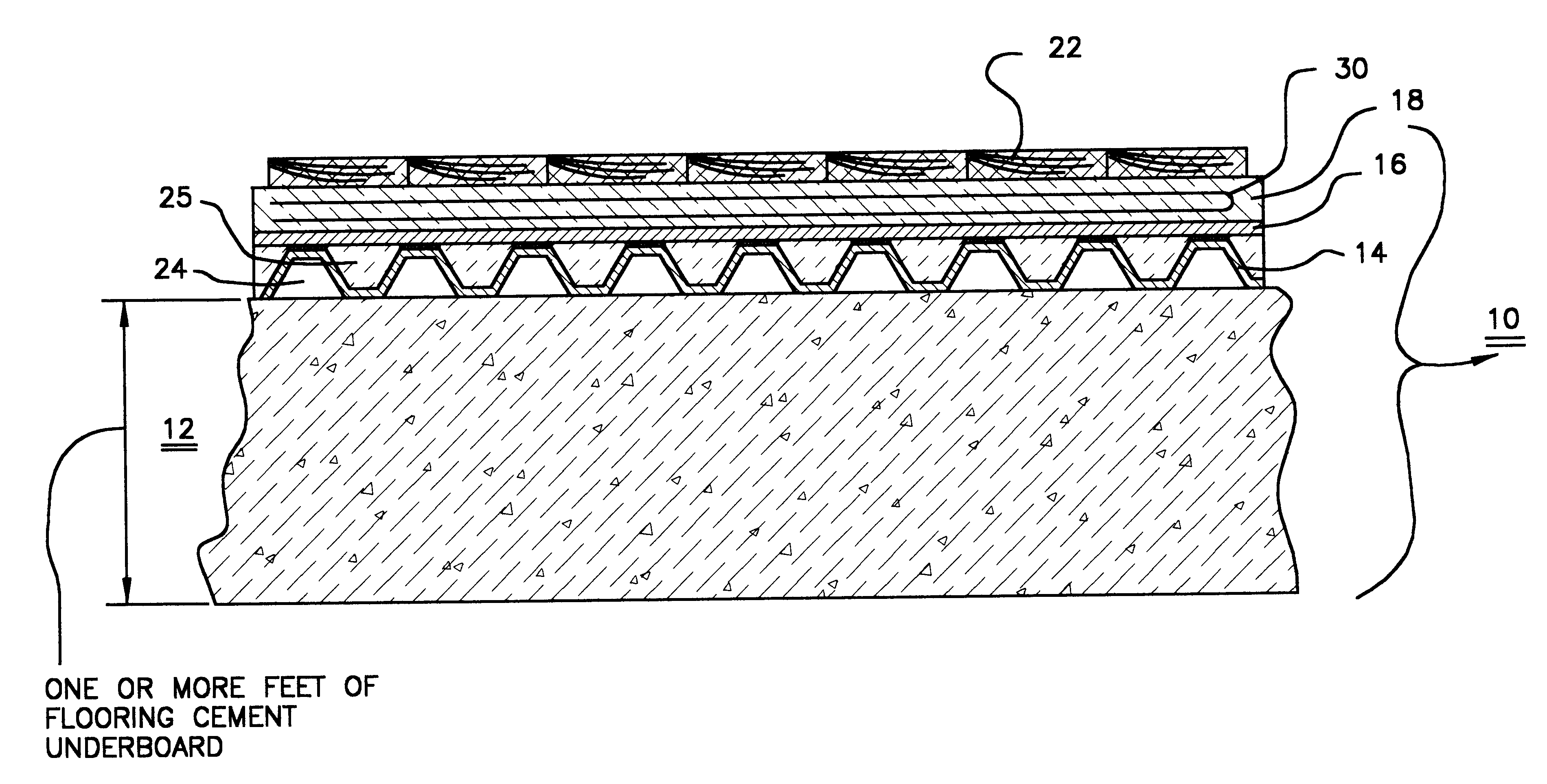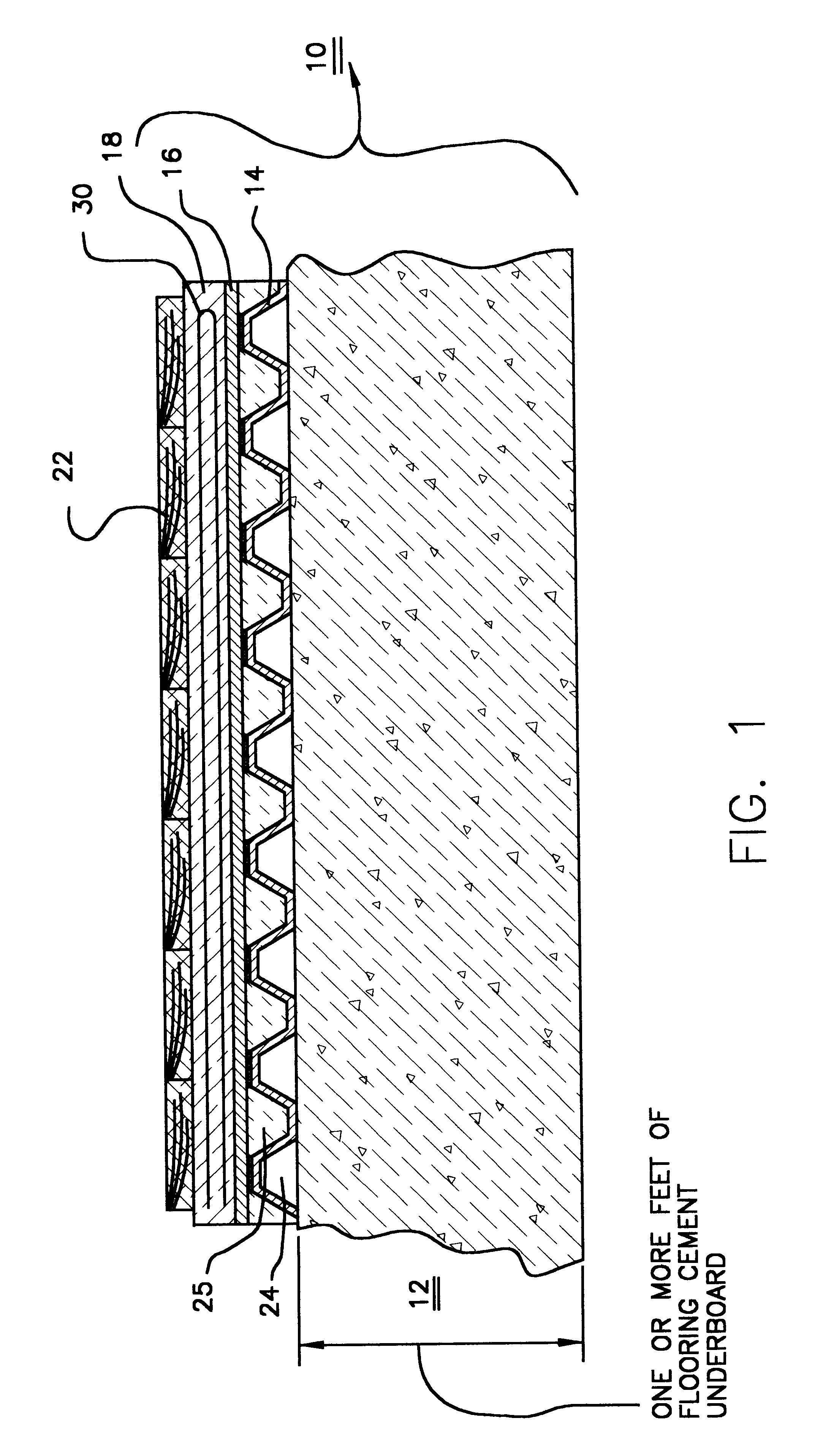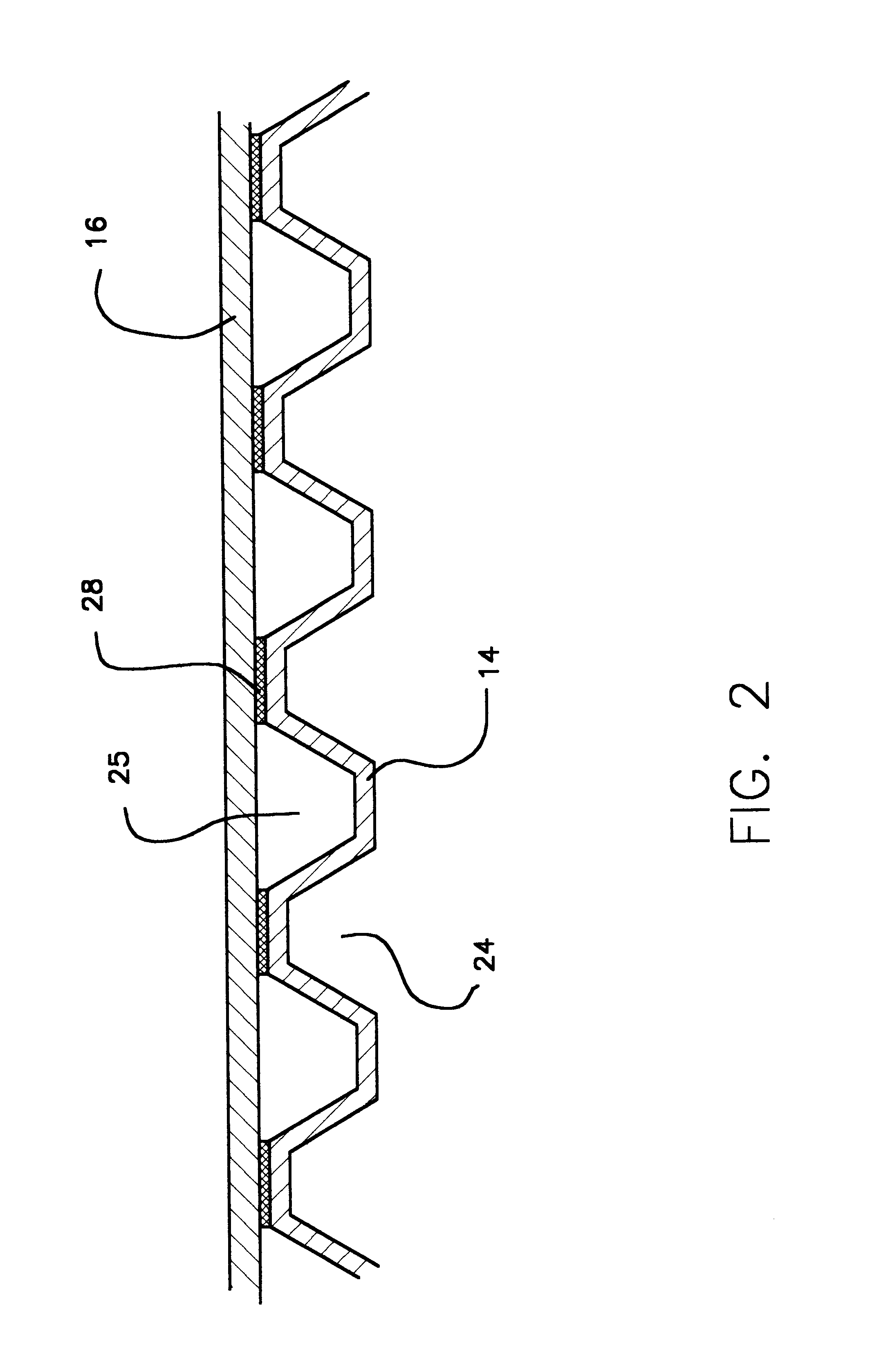Radiant floor heating system with reflective layer and honeycomb panel
a technology of reflective layer and honeycomb, which is applied in the direction of fluid heaters, heating types, lighting and heating apparatus, etc., can solve the problems of substantial heat waste, and achieve the effect of preventing heat dispersal
- Summary
- Abstract
- Description
- Claims
- Application Information
AI Technical Summary
Benefits of technology
Problems solved by technology
Method used
Image
Examples
Embodiment Construction
With initial reference to FIG. 1, a radiant floor heating system 10 and method of installation as installed on a sub-flooring 12 is shown and provided. The radiant floor heating system 10 is provided with a barrier or panel member 14 on which a reflective surface 16 is mounted. A heating element 30 is secured to the reflective surface 16 and then coated with a layer of wet thin set or self-leveling cement 18. In this way, the heating element 30 is imbedded within the self-leveling cement 18. After the self leveling cement 18 dries with the heating element embedded within, flooring tiles 22 may be laid as flooring.
As shown in FIG. 2, the panel member 14 is shown bonded to reflective surface 16. With specific reference to the panel member 14, panel member 14 comprises a honeycombed plastic panel such as a NorCore brand horizontal flooring as manufactured by the Norfield Corporation of Danbury, Conn. The horizontal flooring provides a high strength to weight ratio such physical propert...
PUM
 Login to View More
Login to View More Abstract
Description
Claims
Application Information
 Login to View More
Login to View More - R&D
- Intellectual Property
- Life Sciences
- Materials
- Tech Scout
- Unparalleled Data Quality
- Higher Quality Content
- 60% Fewer Hallucinations
Browse by: Latest US Patents, China's latest patents, Technical Efficacy Thesaurus, Application Domain, Technology Topic, Popular Technical Reports.
© 2025 PatSnap. All rights reserved.Legal|Privacy policy|Modern Slavery Act Transparency Statement|Sitemap|About US| Contact US: help@patsnap.com



